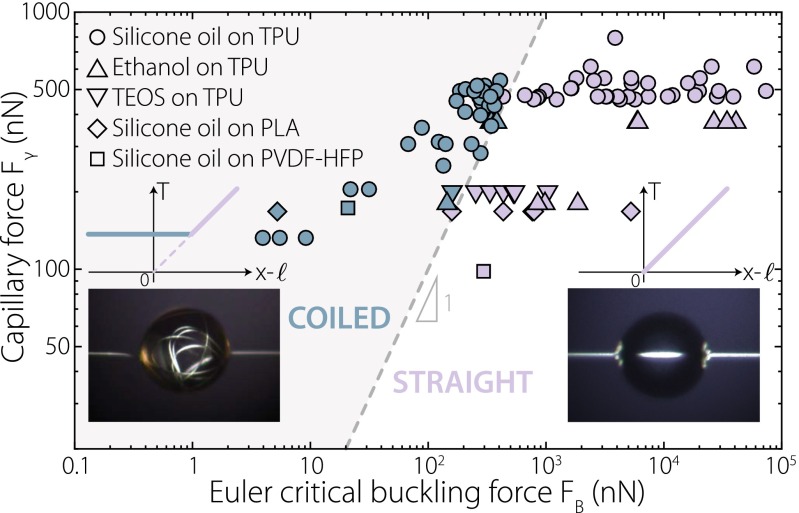Fig. 3.
Spooling activation. In-drop spooling can also be achieved by synthetic fibers wet by droplets of various Newtonian liquids. The phase diagram summarizes experiments performed with different materials and liquids in a quasi-static displacement-controlled setting. Each experiment consists of releasing the external tension on an initially taut system. Spooled or straight filament conformations are then observed within the droplets (blue or purple points, respectively). These data demonstrate that the spooling threshold corresponds to a capillarity-induced buckling condition: Spooling spontaneously occurs as soon as the capillary force exerted by the drop exceeds the Euler buckling load of the filament . Note that, contrary to classic buckling, this spooling continues to proceed as long as the previous force condition is fulfilled, which suggests a subcritical nature for this elastocapillary instability. The composite overall mechanical response (sketched in insets) also sharply changes past the threshold to exhibit a liquid-like plateau force.

